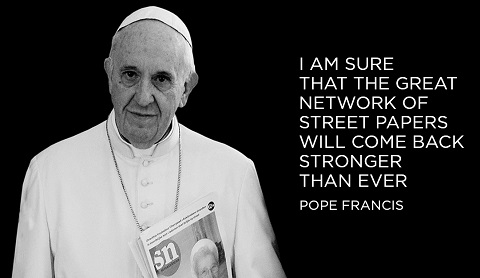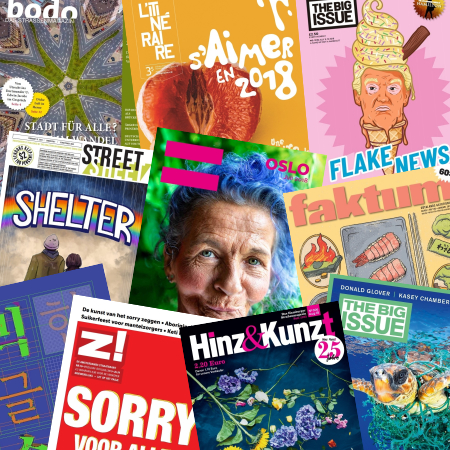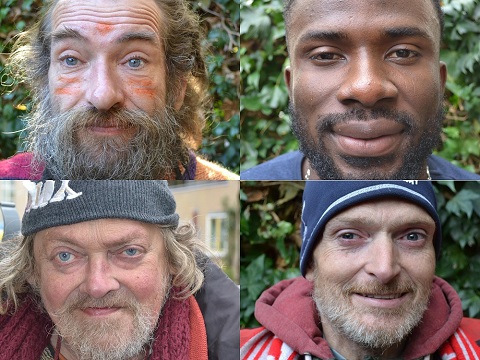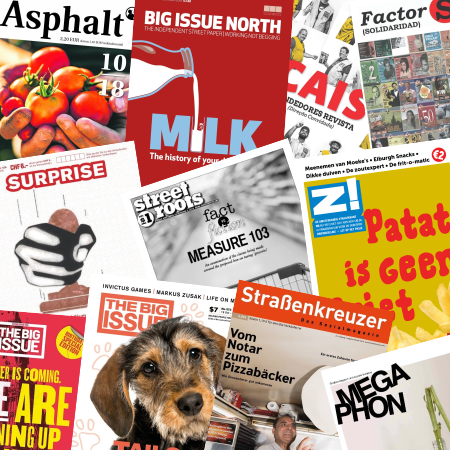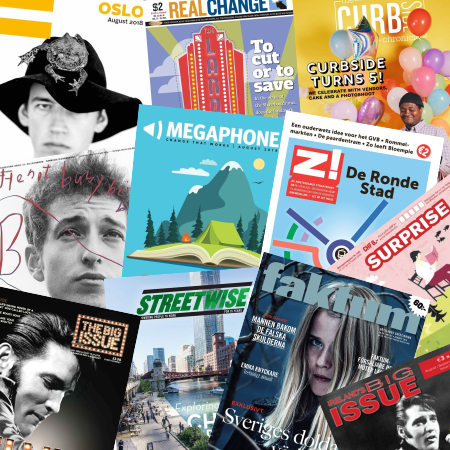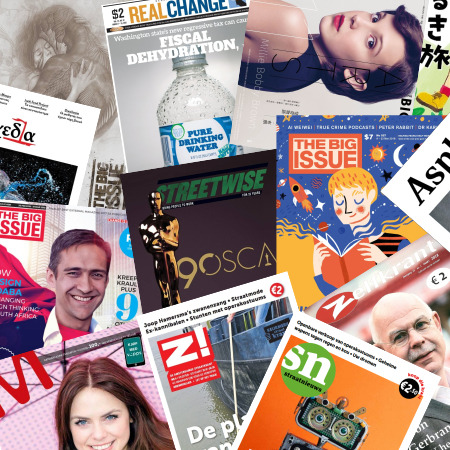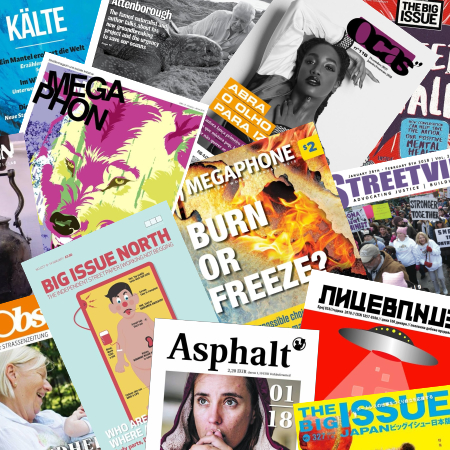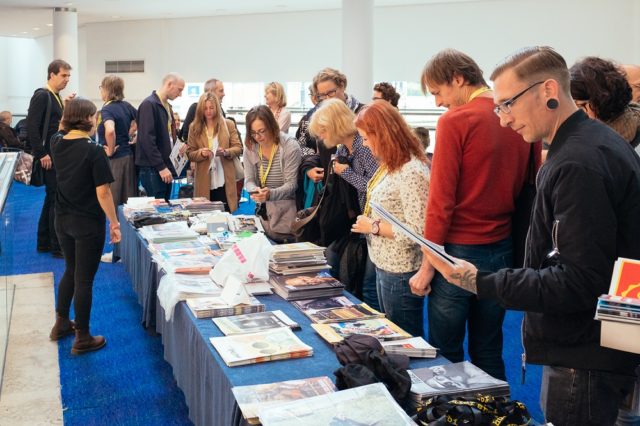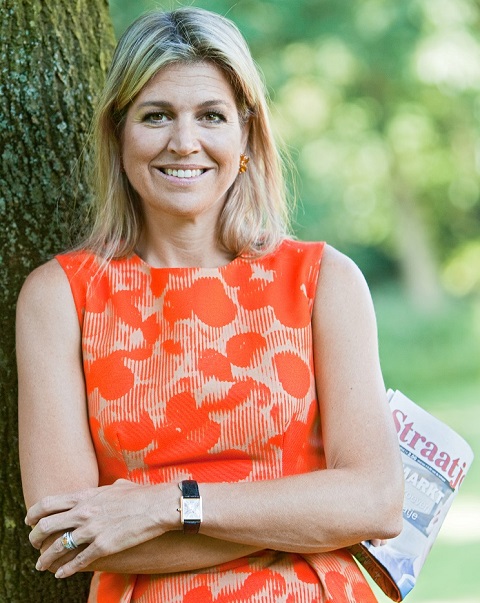Three of INSP’s Dutch street paper contingent are set to launch a shared section in each of their publications – the culmination of a long-gestating collaboration.
New editions of Amsterdam’s Z!, Utrecht’s Straatnieuws, and Haags Straatnieuws in The Hague, will be released this Friday (19 April), with each containing a shared eight-page collaborative section entitled STOEP.
After consultations over the course of nine months, as well as a number of editorial meetings and discussions, STOEP [Dutch for ‘pavement’ or ‘sidewalk’] will finally see the light of day, mainly thanks to work masterminded by each of the publications’ editors.
![(L-R): Z! editor Hans van Dalfsen, Haags Straatnieuws editor Natascha Frensch, and Straatnieuws editor Frank Dries. [Credit: Karin Stroo]](https://hub.insp.ngo/wp-content/uploads/2019/04/INSP_Dutch-street-papers-collab_1.jpg)
Along with the release of the shared section comes some small changes. Z! will increase their cover price to 2.50 Euros and, along with Straatnieuws, will move from magazine to tabloid format. Going forward it is hoped that the collaboration will mean an essential reduction in operation costs for each street paper and the chance to cluster their strengths and resources, potentially leading to new opportunities. Most importantly, it further secures the futures of each street paper, guaranteeing their continued existence to help provide a source of income for the homeless, vulnerable and marginalised people who act as their vendors.
One such vendor, Mick Godsmark, who has been selling Haags Straatnieuws in The Hague for over a decade, explained what being a street paper vendor in the Netherlands means to him.
He said: “Thanks to the street paper, I have become independent. I cannot receive social benefits, so this is my income. At the moment I am in a rehabilitation centre due to a nasty fall down a staircase. I receive get well cards from the people who buy the paper from me. I have known my regular buyers for a long time because I have been there since the beginning. For example, a six-year-old girl always came to give me sweets, and now she is in her twenties and has her own children. Fortunately, I hope soon to be back on the street and selling the paper.”
While the eight shared pages brings something fresh and new to all three, each unique paper will continue to publish under its own name, as well as print its own cover and 12 regional news pages.
Haags Straatnieuws editor Natascha Frensch, speaking about her involvement, told INSP: “I am very happy to work with Amsterdam and Utrecht on this project. Now we can exchange more, cooperate, and hopefully it means the papers will go on. It’s important for the people here.”
INSP also spoke more in depth with editors Hans van Dalfsen and Frank Dries, of Z! and Straatnieuws respectively, about their excitement to be collaborating and the impetus behind the idea.
“I’ve been involved with street papers for 26 years and I’ve always made an effort to work as closely together with others as possible,” explained Dries. “The Netherlands is a small country and to have so many separate street papers publishing and not collaborating occurred to me as a bit silly. This is now a big breakthrough, and I’m very happy with it.
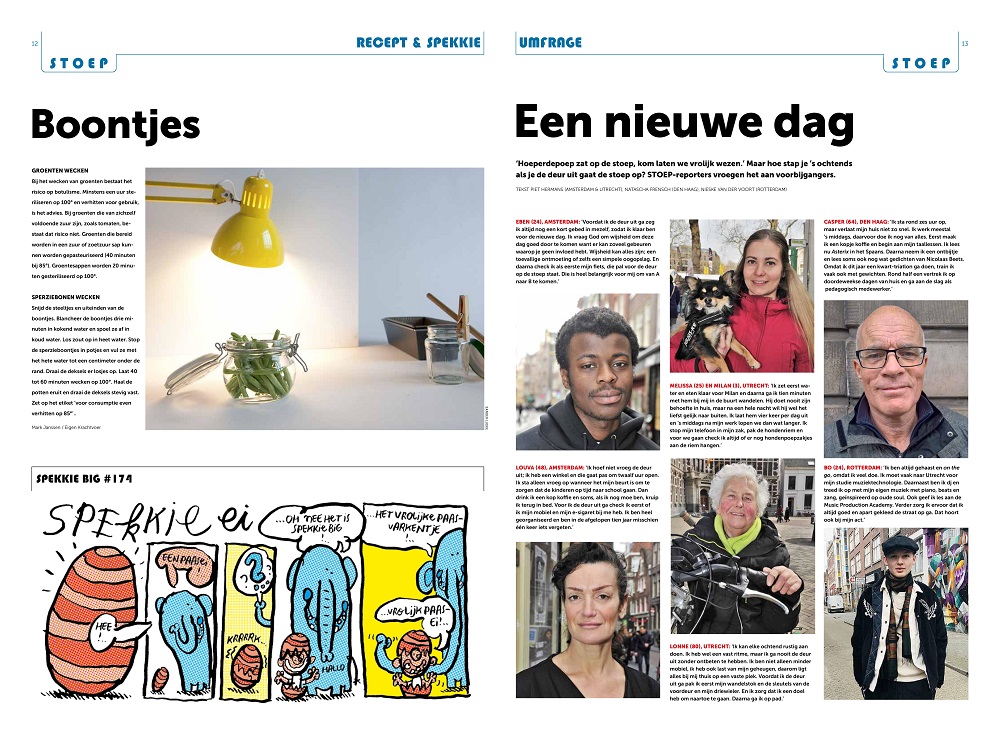
“The effect of what we are doing is immediate. The board members of each paper have already suggested and initiated plans for raising common funds. Editorial costs are going down, and we are now in a better position to get national advertising, big names for interviews and to act as the place to be when the wider media are focusing on topics centred on homelessness. So, finally the idea has found fertile soil and I hope it will bring fruits this year.”
Van Dalfsen added: “It all started when Frank and I realised that the Netherlands was a pretty small country for the number of street papers it was home to. Things have changed since the nineties when enthusiasm for the street paper model was at its peak here. After the first years, which helped make vendors a decent income, some customers have lost interest and, although our content has been fine, we have had to compete with national newspapers who themselves were fighting for survival when the internet boom hit all of the media industry.
“At the first sign of any problems, plans for cooperation started going round. Each separate street paper organisation here was fighting to keep going. Survival was deeply engrained in their DNA, much like it was in their vendors.
“[After overcoming some initial obstacles] we decided we didn’t need to merge all the organisations into one; we wanted to keep all three profitable and that meant they couldn’t lose their local appeal. We put a lot of time into carefully making the basis that made it all official.
“For the cover of the first STOEP we travelled to Zwammerdam, a tiny village right in the middle of our four cities, where nothing ever happens.
“For the negotiation process we chose a proven Dutch technique: ‘Polderen’ [the Polder model – an idiosyncratically Dutch process of consensus decision-making]. That means if the water is high enough, and you are afraid you are going to drown, you put all the relevant parties in one room and continue talking until you have reached an agreement. It is a painstaking and very precise technique that will drive you wild, but will keep you dry. That’s how our river dykes were formed.”
![Straatnieuws vendor Roeland. [Courtesy of Straatnieuws]](https://hub.insp.ngo/wp-content/uploads/2019/04/INSP_Dutch-street-papers-collab_2.jpg)
STOEP is just the latest in a string of regional collaborations across the street paper network, encouraged by INSP to enrich and provide support to the disparate regions that make it up.
At the end of February, INSP announced a new venture aiming to bring together members in the United States, Canada and Mexico, while earlier that month, street papers in the Asia-Pacific region – specifically from Japan, Taiwan, Korea and Australia – met up in Osaka for an exchange of ideas and to learn more from one another. In addition, German language street papers within the network have a storied history of working together, with a dedicated German language day at the INSP Global Street Paper Summit each year.




